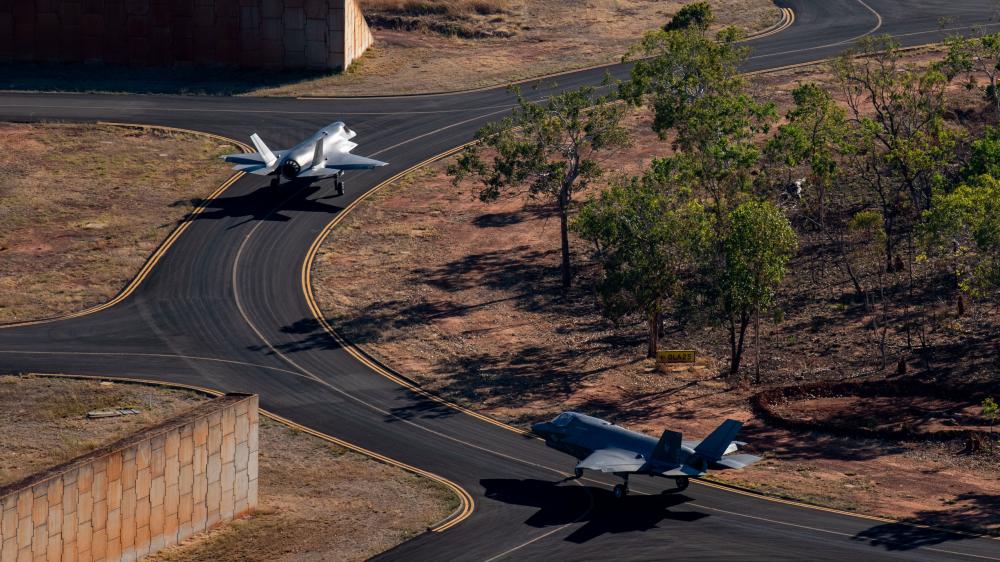
Sea state
Australian submariners are to be trained aboard British nuclear-powered submarines under a deal announced by UK Defence Minister Ben Wallace. Meanwhile, the US Senate Committee on Foreign Relations is considering legislation that would facilitate similar training on America’s nuclear submarine fleet. With analysts having noted that Australia lacks the provisions necessary for training nuclear-powered submarine crews, these moves may provide a stop-gap as its navy builds an indigenous training program.
The Iranian navy reportedly attempted to capture two US uncrewed naval drones operating in the Red Sea and Persian Gulf last week. The Iranian government maintains that the vessels were a hazard to shipping through the region, a claim the US denies. The Saildrone Explorers, which are equipped with sensors, cameras and other data-collection systems, are part of a network of autonomous surface vessels the US Navy uses to monitor maritime activity in the region.
Flight path
The US Naval Air Systems Command has awarded Lockheed Martin a US$504 million contract to sell 12 MH-60R Seahawk helicopters to Australia. The deal was announced by the US last week, just days after it approved a sale of 40 UH-60M Black Hawk helicopters to Australia. The Seahawk procurement is being conducted under the Defence Department’s Project Sea 9100 Phase 1 to replace the Royal Australian Navy’s MRH-90 Taipans, while the proposed sale of Black Hawks is expected to further upgrade Australia’s helicopter fleet with a more reliable and proven system.
Twelve F-35B fifth-generation stealth fighters of the US Marine Corps Marine Aircraft Group 12 (MAG-12) made their debut at Australia’s Pitch Black Exercise. The three-week interoperability drills wrapped up this week. Lieutenant Colonel Richard Behrmann, an operations officer at MAG-12, said the F-35s were practising the marines’ concept of ‘expeditionary advanced basing operations’ at Royal Australian Air Force Base Curtin in Western Australia. The training culminated in several MAG-12 events aimed at refining the concept.
Rapid fire
Russia’s devastation of Ukrainian territory with heavily armoured convoys is prompting European nations to bolster their own defences by purchasing and manufacturing armoured vehicles. Poland is leading Europe’s amour rejuvenation with the purchase of 1,300 American and South Korean tanks, while the Czech Republic is getting 15 German tanks in a swap that involves sending tanks to Ukraine. Further underscoring this shift in European nations’ defence priorities, both Finland and Norway have markedly increased their production and sales of armoured combat and transport vehicles.
After a five-month ceasefire brought relative calm to Ethiopia, fighting has flared once again between the Ethiopian military and the Tigray People’s Liberation Front. Adding confusion to the conflict, each side has accused the other of initiating the violence. Over two years of intermittent war, 500,000 Ethiopians have been killed and 1.5 million displaced. Despite the efforts of international and African actors to push for peace talks between Addis Ababa and the Tigrayans, escalation appears inevitable as Ethiopian and Eritrean ground forces engage TPLF fighters throughout the disputed Tigray region.
Final frontier
The Pentagon scheduled a classified briefing for this week to discuss China’s and Russia’s quests to develop new space weapons after two pivotal incidents last year. In October, China tested what appeared to be a hypersonic glide vehicle combined with a fractional orbital bombardment system. A month later, Russia launched a missile to destroy a defunct satellite, generating thousands of pieces of space debris. The Pentagon’s concern is that Chinese and Russian advances in space-based military technologies threaten to outpace the US’s air-defence capabilities and undermine nation’s larger goals for deterrence and strategic stability in space.
After an initial failed attempt, NASA delayed its launch of the Artemis I lunar mission for a second time due to dangerous fuel leaks. Beyond the aim to put boots on the moon for the first time since 1972, the mission also forbodes the beginning of a new competition for lunar resources between great and emerging powers. The launch also has implications for Australia, whose space agency is involved in the US-led Artemis project. A successful launch is expected to provide inspiration for Australian engineers and scientists and for the nation’s budding space industry.
Wired watchtower
US officials have told chip designer Nvidia to stop exporting its A100 and H100 computing chips to China due to concerns that the products may be used for military purposes. Rival Advanced Micro Devices also received similar licence requirements. The ban is likely to hamper Chinese artificial intelligence capabilities as the chips are designed to assist in image recognition. The ban marks an escalation in the US crackdown on semiconductor exports to China as tensions mount over Taiwan, where Nvidia’s chips are produced.
Australia’s Home Affairs Minister Clare O’Neil has ordered her department to investigate data-harvesting by Chinese-owned TikTok, WeChat and other social media companies. The review follows revelations in August that the TikTok app had been sharing US user data and sending it back to China where its parent company, ByteDance, is based. The review will aid Australia’s attempts to combat foreign interference and Chinese information operation campaigns in Australia.

